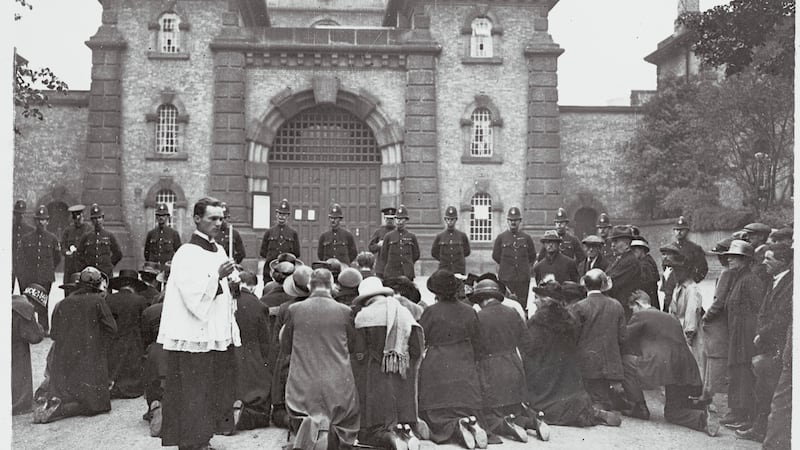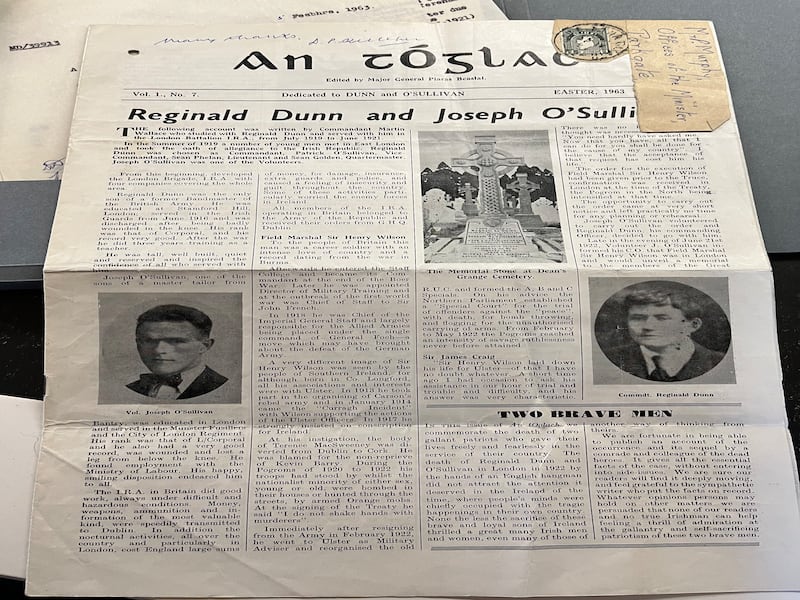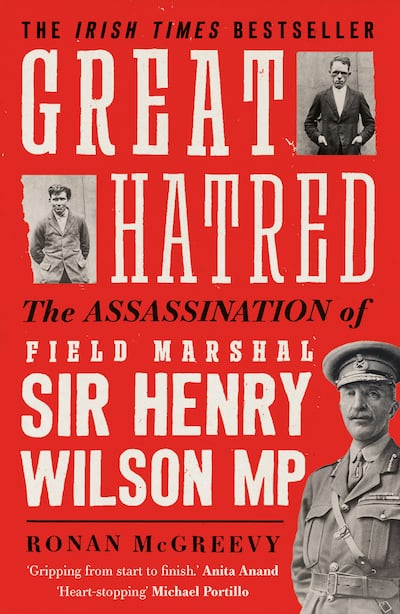On the evening of June 21st, 1922 a meeting of the IRA that would change the course of Irish history was held in Mooney’s pub in Holborn, central London.
The subject was the split caused by the Anglo-Irish Treaty which had divided the IRA in Britain as it had in Ireland. The officer commanding the IRA in London, Reginald Dunne, had been sent white feathers, the sign of cowardice, by members of Cumann na mBán, as he was seen as pro-Treaty.
The meeting took an unexpected turn when somebody arrived into the pub with the Pall Mall Gazette, a now defunct London evening newspaper. There on page 2 was a single paragraph notice that was effectively a call to arms.
A war memorial erected by the Great Eastern Railway Company in the main book hall of Liverpool Street Station will be unveiled tomorrow by Field Marshal Sir Henry Wilson MP, the dedication service being conducted by the Bishop of Norwich. The booking hall will be closed to the public from 12.15 to 1.15pm.
Bat conservation: Simple ways you can help these tiny mammals to thrive in your local area
Pamela Anderson: ‘I felt like life was really like death for me’
Jamie Dornan: ‘I lost my mom, and I lost four of my best friends in an accident. I had a difficult few years’
From national journalism and lecturing in TU Dublin to living as a Buddhist priest
All present stared at the notice and knew the import of it immediately. Here was an opportunity to finally fell a man perceived to be one of the greatest enemies of Irish nationalism, responsible for pogroms against Catholics in the North and for pronouncements advocating the reinvasion of the South.
Dunne immediately volunteered to carry out the deed. So did Joseph O’Sullivan, another IRA volunteer, though he had lost a leg at the Battle of Passchendaele during the first World War. A third man, Denis Kelleher, a Cork-born schoolteacher, volunteered to be the driver.
Dunne too was disabled as a result of the first World War and walked with a limp. It was effectively a suicide mission. There was one man present who could have stopped it. The order to shoot Wilson came from Michael Collins in his position as president of the Irish Republican Brotherhood (IRB), a secretive organisation dedicated to the overthrow of British rule in Ireland.
Sam Maguire had sworn Collins into the IRB a decade previously. Maguire was the head of the IRB in London. He could have called off this foolhardy enterprise, but he did not.
Things got heated and the gathering stepped outside the pub to continue their conversation. According to Liverpool IRB veteran Patrick Daly, Maguire pointed to O’Sullivan and said: “This fellow is very keen on shooting Wilson”. Maguire did not signal any disapproval of the act.
Dunne and O’Sullivan shot Wilson dead on the doorstep of his own home at 36 Eaton Place on the following afternoon after the unveiling of the memorial at Liverpool Street Station. The shooting enraged the British government which blamed it, erroneously as it turned out, on the anti-Treaty side.
British prime minister David Lloyd George sent an ultimatum to the provisional Irish government that evening stating that if the Irish did not remove the anti-Treaty garrison from the Four Courts, the British would do it for them. Six days later, the provisional government shelled the Four Courts, so beginning the Civil War.
Dunne and O’Sullivan were apprehended by an angry mob shortly after the shooting and hanged in Wandsworth Prison on August 10th, 1922.

Nowadays, Sam Maguire is known for the cup that was posthumously named after him rather than his revolutionary activities, but he was one of the most prominent republicans, a post office sorter who intercepted much incriminating British government mail. He was also a stalwart of the GAA in London.
One of those who knew him was Martin Wallace, a British-born IRA veteran who had also served in the first World War. He was a fighter pilot in the war and was shot down by the squadron led by the famous Red Baron Manfred von Richthofen.
Wallace gave his account of the Wilson shooting and its aftermath to Eamonn Kelly in 1967. Kelly was then a student and would go on to become the keeper of Irish antiquities at the National Museum of Ireland.

When I wrote the first edition of my book, Great Hatred: The Assassination of Field Marshal Sir Henry Wilson MP, I was not aware of Wallace’s testimony. It confirms the thesis in my book that the order from Collins to shoot Wilson came via a female courier to London.
Wallace believed Maguire had a drink problem. He told Maguire that he should stop meeting IRA volunteers in pubs as the drink clouded his judgement. He suggested instead that he meet them in coffee or teashops, but Maguire ignored him.
Maguire fled Britain in 1923. He fell out with the Free State government and died of TB in 1927 at the age of 49 in his native Dunmanway in Co Cork. A year later, the trophy that bears his name was commissioned by his friends.
Wallace wrote his own version of the Wilson shooting for the Easter 1963 edition of An tÓglách, the news-sheet for IRA veterans
Wallace claimed it was he who supplied the Webley revolvers that Dunne and O’Sullivan used to shoot Wilson. He had swapped his own Webley for O’Sullivan’s “beautiful little Spanish automatic”.
Wallace did not feel comfortable having such a powerful weapon as a Webley in his possession, having seen the damage one could do during the first World War.
“If it hit you in the shoulder, it would leave a small hole where it entered, but at the back, my God, you couldn’t cover it with a dinner plate. It would probably tear your arm off. It really was a terrible weapon. I know – I used one in France.”
Wallace witnessed the spy Vincent Fovargue being picked up outside a ceilidh hall in Fulham in April, 1920 and shot dead on a golf course in Ashford, Middlesex. Dunne was there to escort Fovargue to the car, which contained three men, Joe O’Sullivan being one of them. Wallace did not envy them their task.
“It was one of the most unpleasant moments of my life. I thought I would have to shoot him. I don’t really think I could have killed him in cold blood like that. I don’t think I could have shot Sir Henry Wilson for that matter. To shoot a man in cold blood like that takes a special kind of courage. I don’t have it.”
Wallace claimed he knew the real circumstances behind the shooting of Wilson and dismissed the view that Dunne and O’Sullivan acted alone as “patent nonsense”. The two men were extremely loyal to Michael Collins and supported him on the question of the Treaty (as did Wallace), while most London republicans opposed it. Therefore, they would have acted against Wilson only if given an explicit order by Collins, he believed.
Wallace supplied a photograph to An tÓglách taken in 1920 of an Irish in London gathering which included all of the main protagonists involved in the Wilson shooting with Sam Maguire in a prominent position.
The recent release of the Irish Military Service Pensions Collection (MSPC) has revealed for the first time just how prevalent the IRA was in Britain during the War of Independence.
Volunteers raided for weapons and smuggled them to Ireland. Dunne and the O’Sullivan brothers were able to use their London accents and wound badges to enter British army barracks and steal cartloads of weapons for the IRA.

The IRA carried out hundreds of acts of sabotage with little loss of life, but garnered a huge level of publicity for Irish independence. They burned warehouses, hay stacks and factories and tampered with rail links. They even burned both Old Trafford and Maine Road. They targeted the homes of Black and Tans operating in Britain.
The ever-present threat of assassination at the hands of Irish republicans concentrated the minds of the British cabinet. Barriers were erected at the entrance to Downing Street during the first World War. British prime minister David Lloyd George, who was known to cower under tables during German Zeppelin raids, was particularly concerned for his personal safety.
Speaking to Michael Collins during the Treaty negotiations, Lloyd George confided: “The destructive work of the London IRA unit caused my Government greater concern than that of your whole organisation in Ireland”.













